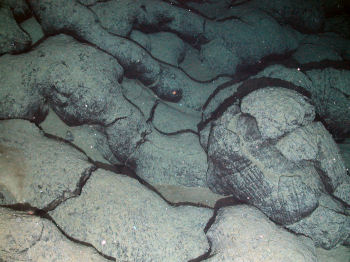Geology
The Cayman Trough harbours the world's deepest chain of undersea volcanoes, where the seafloor of the Caribbean is rifting apart. Studying those volcanoes in detail should shed light on the geological processes that shape our world.
The Earth's crust is made up of a jigsaw puzzle of plates, moving relative to one another like ice floes in a frozen sea. Where two plates collide, the edge of one usually slides down into the Earth's interior, forming a deep ocean trench. Where two plates move apart, something has to fill the gap between them. That something is magma, which melts as it rises from the Earth's mantle below and feeds chains of undersea volcanoes.
These volcanoes form the mid-ocean ridge - our planet's longest geological feature, snaking 40 000 miles around the globe like the seam on a baseball. Around 3 square kilometres of new Earth's crust are formed each year by the volcanoes of the mid-ocean ridge, which erupt as the plates on either side are pulled apart.

But not all sections of the mid-ocean ridge are equal. In some areas, the plates are moving apart more quickly than in others. At 'fast-spreading ridges' - where plates are moving apart at up to 140 mm per year - there is usually plenty of magma to feed the volcanoes. But 'ultraslow-spreading ridges', where plates are moving apart as slowly as 10 mm per year, may be more starved of magma.
The Mid-Cayman Spreading Centre - the geological name for the chain of volcanoes that runs north-south across the Cayman Trough - is an ultraslow-spreading ridge. Ultraslow-spreading ridges make up more than 20 percent of the world's mid-ocean ridges, and yet they are poorly known.
Page 1: Breaking new ground in the deep
Page 2: Moving mountains
Want to dive deeper?
Visit Venture Ocean for more about undersea volcanoes and mid-ocean ridges
Watch animations of the motion of the plates of the Earth's crust
Read more about ultraslow-spreading ridges
Download a feature about ultraslow-spreading ridges from the journal Oceanography
Science
Find out more about the Cayman Trough, undersea volcanoes, deep-sea vents,
and the inhabitants of the abyss.
What are we investigating?


